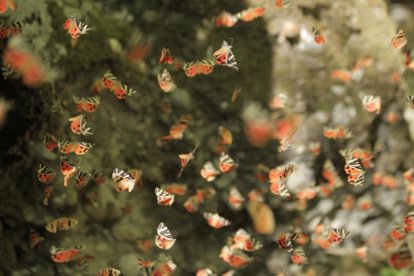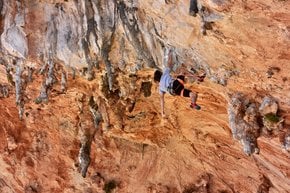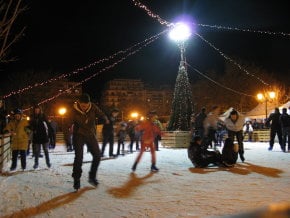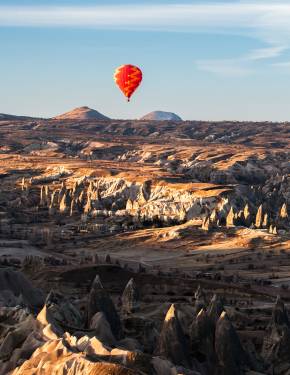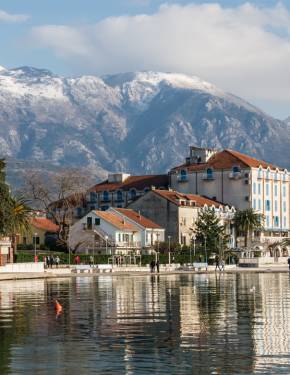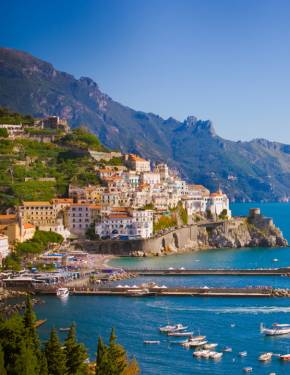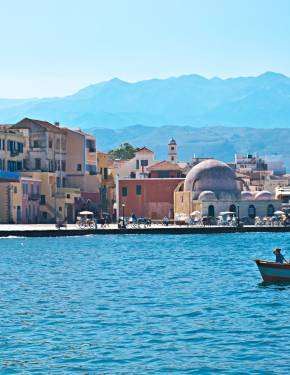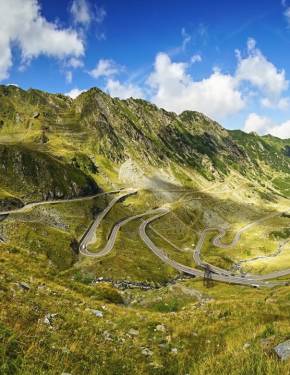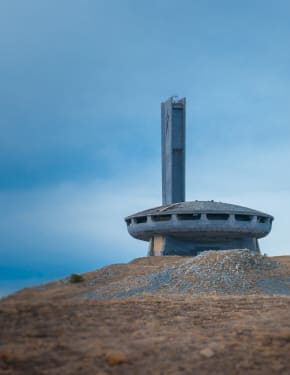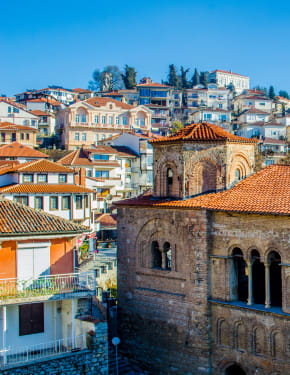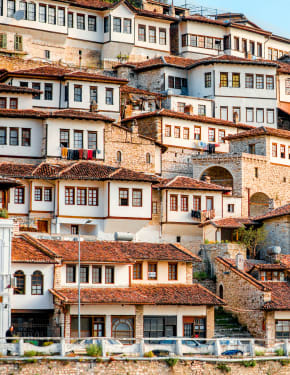Valley of Butterflies in Rhodes, Greece 2026
Thousands of butterflies flock to Rhodes every year at the end of May
Best time: late May–September
The Valley of Butterflies, also known as Petaloudes Valley, is one of Rhodes Island's most iconic natural attractions. Known for its breathtaking beauty and the unique phenomenon of thousands of butterflies gathering, this valley offers a tranquil escape for nature lovers and families alike. Visitors have the opportunity to witness this extraordinary event, while also exploring the surrounding area's rich natural and cultural heritage.
The Butterfly Season
Each year, from late May to September, the Valley of Butterflies becomes a haven for the Jersey tiger moth, a species of nocturnal moth known for its vibrant red and black wings. The butterflies are drawn to the valley by the high humidity and the scent of Oriental Sweetgum trees (Liquidambar orientalis), the only natural forest of its kind in Europe. As the butterflies enter the final stage of their life cycle, they congregate on the shady sides of tree trunks and rocks, creating a mesmerizing display of color and movement. According to experts, the best time to visit is during the early morning or late afternoon when the butterflies are most active.
Location, Hours, Tickets
The Valley of Butterflies is located in the northern part of Rhodes, about 16 miles (26 km) from the town of Rhodes and just 6 miles (10 km) from the airport. The valley is open to the public from April 12, 2024, until the end of October, with varying entrance fees depending on the season. From April 12 to June 13 and from October 1 to 31, the entrance fee is €3, while from June 14 to September 30, it increases to €6. Children under 12 years old are admitted free of charge. The visiting hours are from 8 am to 7 pm daily.
How to Get There
You can reach the Valley of the Butterflies by bus or through an organized tour. A direct bus departs twice daily from the D.E.S RODA Bus Station, taking approximately 50 minutes to reach the Valley. The estimated fare is between €2–6. Bus route 20 is the most convenient option, with a stop just a 2-minute walk from the Valley. For those looking for a more guided experience, tours often include visits to other attractions like the Seven Springs Valley, Filerimos Hill, or wine tasting. The organized tours provide transportation and time to explore these natural sites at your own pace.
Butterfly Valley and Seven Springs Valley Day Trip
For example, the "Rhodes: Butterfly Valley and Seven Springs Valley Day Trip" offers a full-day excursion where you can explore both the Valley of the Butterflies and the Seven Springs Valley. This tour is priced around €27.55 per person and includes pickup and drop-off from various locations in northern Rhodes, transportation by coach, and entry to the Butterfly Valley (additional fee during the high season).
Filerimos Hill and Butterfly Valley Bus Trip
Another option is the "Rhodes: Filerimos Hill and Butterfly Valley Bus Trip," which is a 6-hour tour combining a visit to the historic Filerimos Hill with a stop at the Butterfly Valley. This tour costs approximately €29.00 per person and includes similar amenities such as transportation and hotel pickup. These tours provide a convenient and informative way to experience the natural beauty and history of Rhodes while ensuring you don't miss any key sights.
Jersey Tiger Moth
The Jersey tiger moth (Panaxia quadripunctaria) is a species of nocturnal moth that is native to the Mediterranean region. Its striking red, black, and white coloration makes it easily recognizable. The moths migrate to the Valley of Butterflies to reproduce, with females laying eggs in early fall. The larvae feed on the local vegetation, and after a period of metamorphosis, they emerge as adult moths in late spring. The life cycle of these moths is closely tied to the valley's unique ecosystem, making it a critical habitat for their survival.
Responsible Tourism and Conservation
While the Valley of Butterflies is a beautiful natural wonder, it is crucial to approach your visit with respect and care. The butterflies, in this final phase of their life cycle, conserve energy by resting during the day. Loud noises or sudden movements can startle them, causing them to expend energy unnecessarily. Visitors are advised to observe the butterflies quietly, without clapping, whistling, or making other loud sounds. This consideration helps preserve the delicate balance of the ecosystem and ensures that future generations can continue to enjoy this natural spectacle.
History
The history of the Valley of the Butterflies in Rhodes is rich with legend and transformation. The valley was originally named in 1728 after a slave named Pelekanos, who tragically ended his life there for the sake of love. In the early 90s, a significant change occurred when butterflies began to populate the valley, prompting the name to be changed to the "Valley of the Butterflies," and the river running through it was named after Pelekanos. Some believe that the Italians introduced the butterflies in 1930, but local elders insist that the butterflies had been there long before. The valley, once inaccessible due to its dense vegetation, was made accessible by the Italians in 1928, allowing visitors to witness the breathtaking phenomenon of butterflies overwhelming the area. Since then, the valley has become a unique site where visitors and butterflies coexist during the breeding season, which lasts from early June to late September.
Nearby Attractions
Just 1 mile (1.5 km) away from the Valley of Butterflies is the Farma of Rhodes, a petting zoo where visitors can enjoy a unique petting experience with various farm animals. Additionally, a visit to the Kalopetra Monastery, located 1.2 miles (2 km) from the valley, offers a peaceful retreat and stunning panoramic views of the surrounding landscape. The monastery, built in 1784 by Alexander Ypsilantis, a Greek prince exiled to Rhodes, is steeped in history and provides a serene complement to the natural beauty of the valley.
Additional Points of Interest
For those who wish to explore more of Rhodes, the island offers a wealth of cultural and natural attractions. The ancient city of Kamiros, with its well-preserved ruins, is just a short drive away. Additionally, the nearby beaches of Ialysos and Kremasti provide opportunities for relaxation and water sports. Visitors can also take a scenic drive to the top of Filerimos Hill, where they can enjoy panoramic views of the island and visit the historic Monastery of Filerimos.

